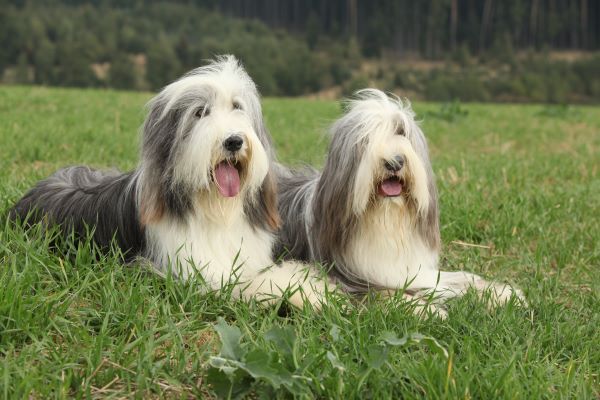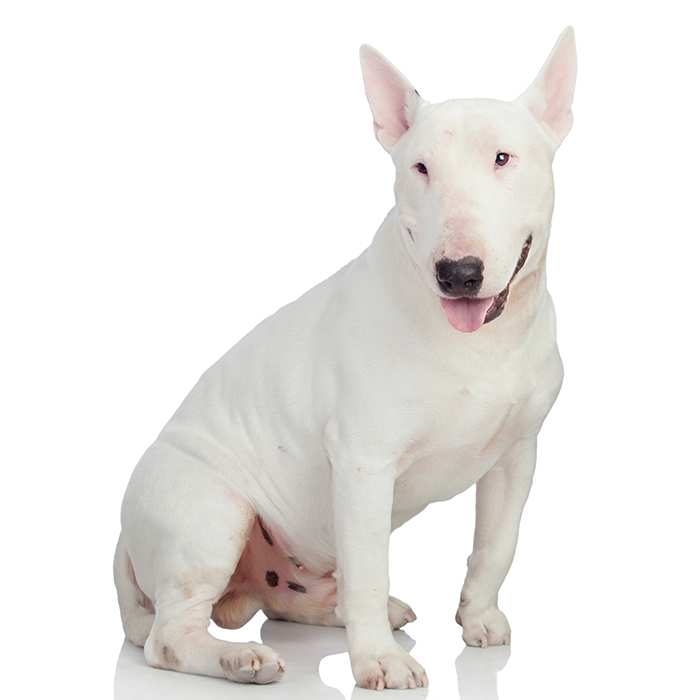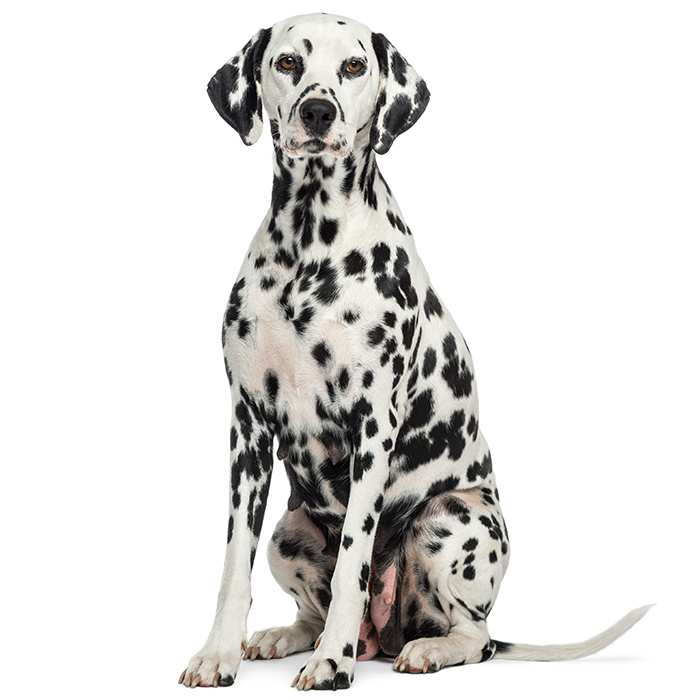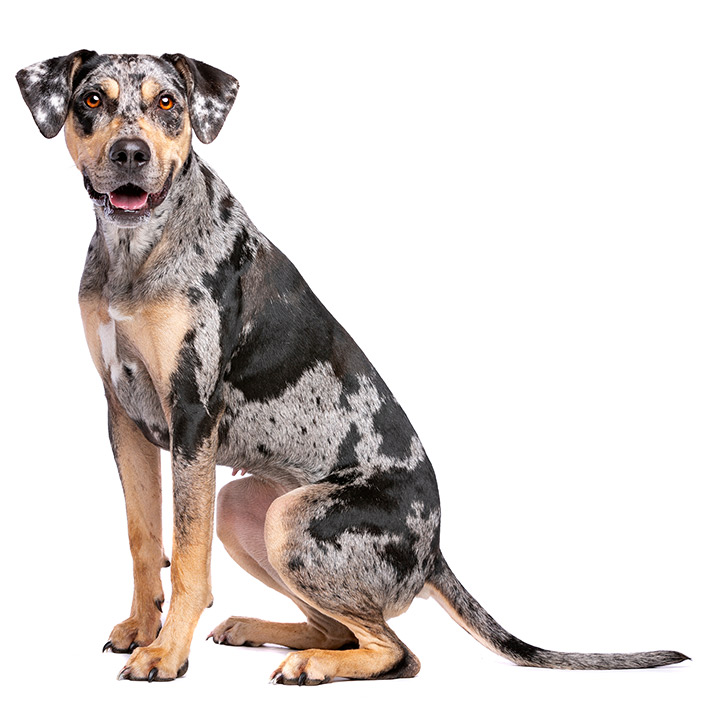Bearded Collie
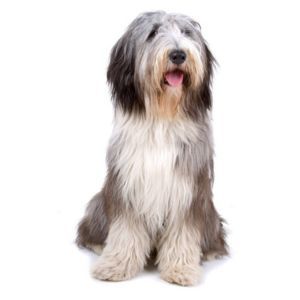

| Recommended for | Best suited for active families who enjoy outdoor activities |
| Breed Classification | Herding Group |
| Other names | Beardie |
| Lifespan | 12 to 14 years |
| Size | Medium to Large |
| Temperament | Friendly, outgoing, playful, energetic |
| Intelligence | Highly intelligent and eager to learn; excels in obedience and agility training |
| Tendency to bark | Moderate to high; tends to bark when excited or to alert owners of changes in the environment |
| Maintenance Level | High grooming needs; high energy levels and exercise needs |
| Health Risk | This breed has an around average probability of having health issues in its lifetime, hence it is one of the more affordable breeds to insure. |
Insuring a Bearded Collie?
Get our award-winning Nose-to-Tail Cover with up to $30k annual benefit limit, up to 90% of eligible vet bills back, and no sub-limits.
Get a quick quote
Is this breed right for you?
Try our breed selector quiz to find out your best matching breed!
Insuring a Bearded Collie?
Get our award-winning Nose-to-Tail Cover with up to $30k annual benefit limit, up to 90% of eligible vet bills back, and no sub-limits.
Get a quick quote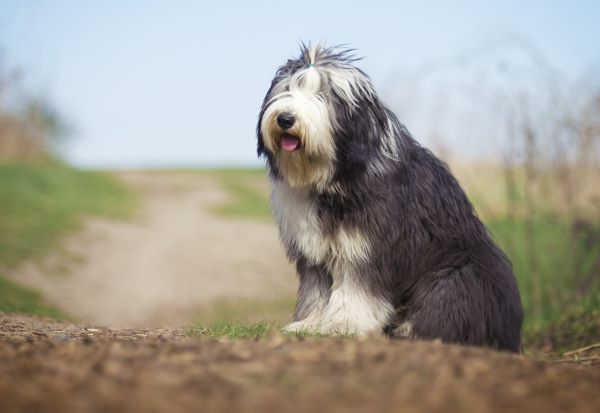
Breed history of Bearded Collies
The Bearded Collie is a Scottish herding breed that has existed for centuries, and was traditionally used to herd livestock across the rugged terrain of Scotland. Their long, shaggy double coat provided protection against the harsh weather, making them well-suited for outdoor work.
As a breed utilized mostly by peasants and shepherds of the distant past, no definitive records of the Beardie’s creation exist. According to legend, a Polish merchant taking grain to Scotland in exchange for sheep had six Polish Lowland Sheepdogs with him to move the sheep. The Scottish shepherd was so impressed with their herding ability that he traded a fine horn ram and two ewes in exchange for a pair of the dogs. They were bred with local dogs and the Bearded Collie evolved.
For many years, the Bearded Collie remained largely unchanged, with farmers selecting dogs based on their herding ability rather than physical attributes. The result is that Beardies tend to be very individual in appearance, with no two looking exactly the same.
There are depictions of the breed in paintings of the 1700s, where masters such as Reynolds and Gainsborough included dogs recognizable as Beardies in portraits of well-heeled Scottish clients, indicating that at some point the humble shepherd’s dog became a fashionable ornament of high society.
By the early 20th century, the breed’s numbers began to decline, and it was at risk of fading into obscurity. In the 1940s, a revival effort led by dedicated enthusiasts helped restore the breed. The first Beardies arrived in Australia in the early 1970s; since then, the Bearded Collie has gained a modest following in Australia, both as a working dog and a show companion.
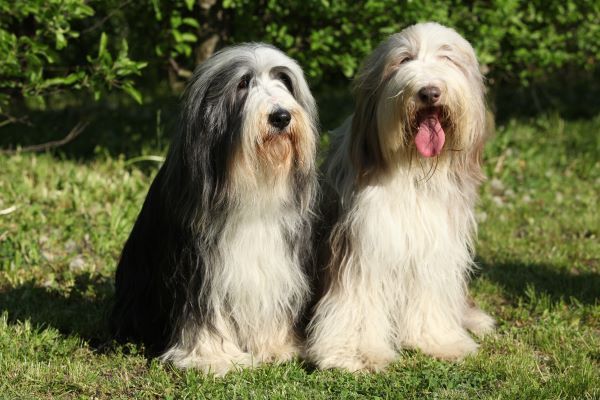
Physical description of Bearded Collies
The Bearded Collie is a medium to large-sized dog with a sturdy build, designed for agility and endurance. Their broad skull, expressive dark or hazel eyes, and characteristic “beard” of long hair around the muzzle give them an intelligent and friendly appearance.
The long, flowing, shaggy, double coat is one of the Bearded Collie’s most distinctive features, covering them from head to toe and offering protection against harsh weather conditions. The outer coat is straight, shaggy, and slightly coarse, while the soft, dense undercoat provides insulation. The coat comes in a variety of colours, including black, blue, brown, and fawn, often with white markings.
| Weight range | Male: 20 to 25 kg; female: 18 to 23 kg |
| Height range | Male: 53 to 56 cm; female: 51 to 53 cm |
| Colours | Black, blue, brown, or fawn, often with white markings |
| Coat length | Long, dense double coat with a straight, shaggy outer layer and a soft, insulating undercoat |
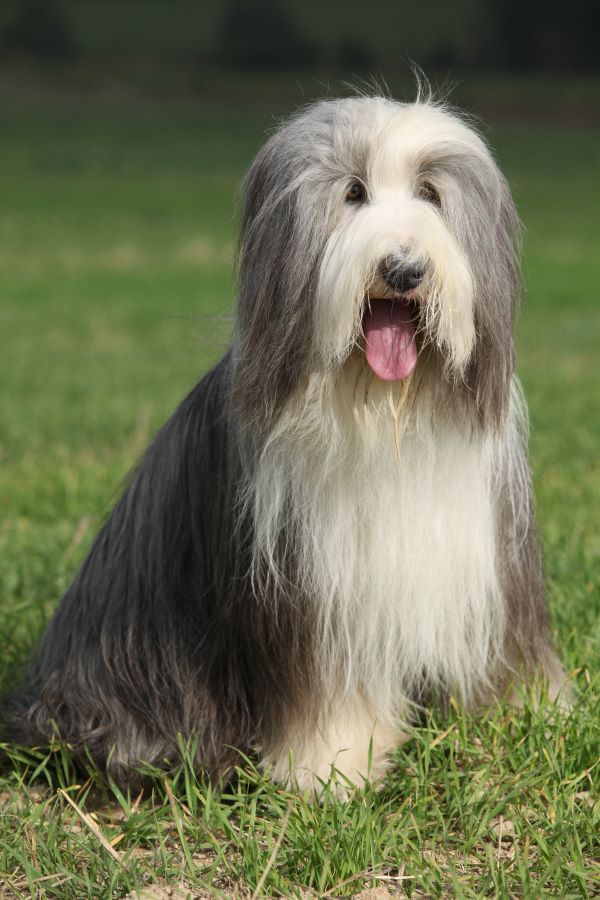
Bearded Collie personality and temperament
The Bearded Collie is an affectionate, lively, and intelligent breed that thrives in active households. Known for their friendly and outgoing nature, they forms strong bonds with their family and enjoy being involved in daily activities. Highly social, Beardies get along well with children and other pets, making them a suitable companion for families.
Energetic and playful, Beardies enjoy interactive games, outdoor activities in all weather, and training exercises that keep their bodies and minds engaged. They adapt well to different living environments, provided they get enough exercise and mental stimulation. While capable of independent play, they prefer companionship and do well in homes where they receive plenty of attention and engagement. They enjoy human company and like to have things to do, so can become difficult and destructive if left alone all day.
While generally easygoing, as a herding breed they were developed to be independent decision-makers, so they can at times be wilful and ‘a handful’ to manage. Despite this, Beardies are always friendly, comical, full of heart, and entertaining. Be aware that barking is an important part of this breed’s working style with livestock, so they will tend to express extremes of emotion this way.
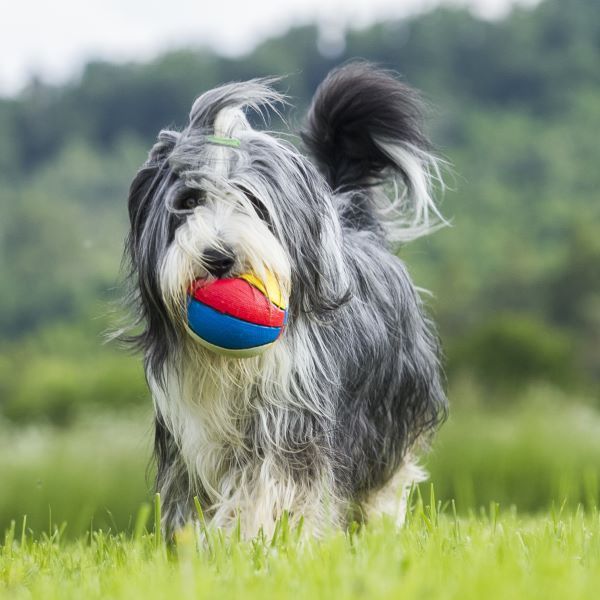
Bearded Collies with kids and other pets
Bearded Collies are affectionate, playful, and well-suited for families with children. Their friendly and energetic nature makes them great companions for active kids, and they often enjoy joining in on games and outdoor activities. While generally gentle, their excitement can sometimes be overwhelming for younger children, and as herding dogs they may chase and nip, so supervision and early training are important to encourage good behaviour.
This breed also gets along well with other pets, especially when introduced from a young age. Bearded Collies have a natural herding instinct, which may lead them to try and “round up” smaller animals, but this behaviour is usually harmless and can be managed with training. They are social dogs that enjoy companionship, making them a good fit for multi-pet households. Early socialisation helps them develop into well-mannered companions, ensuring they interact well with people and other pets.
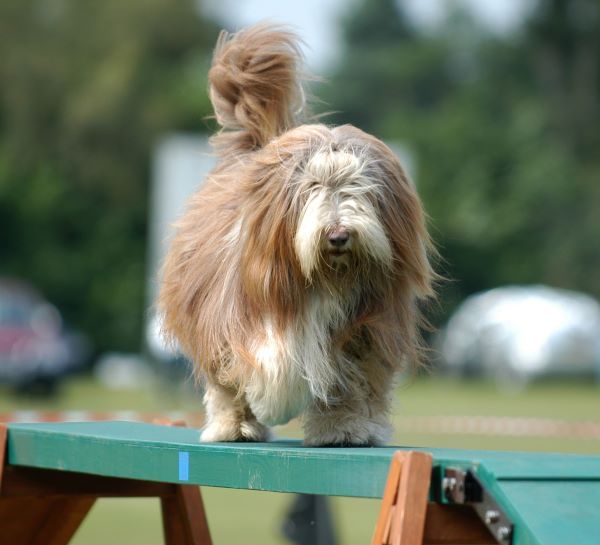
Bearded Collie training and exercise
Bearded Collies are energetic dogs that require plenty of daily exercise to stay fit and content. They thrive on outdoor activities such as long walks, runs, or interactive play sessions like fetch and frisbee, regardless of the weather. Their herding background means they enjoy having a purpose, so activities like agility training, herding trials, or obedience competitions can provide both physical and mental stimulation. Without adequate exercise, they may become restless and develop undesirable behaviours such as excessive barking or chewing.
Bearded Collies are intelligent and eager to learn, making them highly trainable with the right approach. Positive reinforcement methods, such as treats and praise, work best as they respond well to encouragement. While naturally obedient, their independent streak means consistency is important when setting boundaries. They bore easily, and training must be kept interesting. Regular training sessions that introduce new commands and challenges will help keep them mentally engaged and prevent boredom.
| Energy level | High |
| Exercise requirements | High |
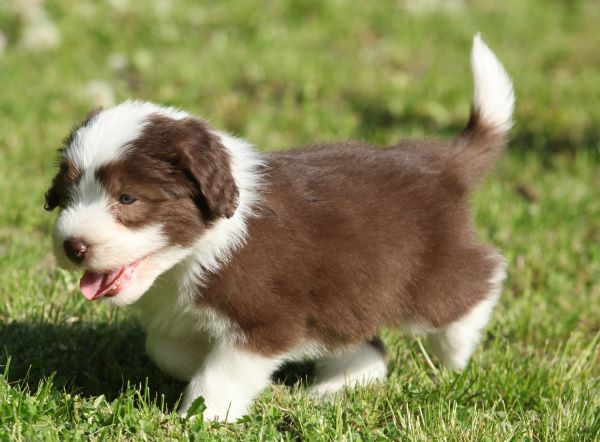
Bearded Collie feeding and nutrition
A Bearded Collie’s dietary needs change with age and size. Puppies require protein-rich food to support growth, while adults need a balanced diet to maintain energy levels. Senior dogs benefit from lower-calorie meals and joint-supporting nutrients to prevent weight gain and mobility issues. Adjusting portion sizes based on activity level helps maintain optimal health.
Managing calorie intake is essential, as Bearded Collies can gain weight if overfed. Measured portions, limited treats, and regular exercise prevent obesity-related issues. Regular vet check-ups ensure their diet meets their specific needs, with professional guidance on nutrition, supplements, and overall health care.
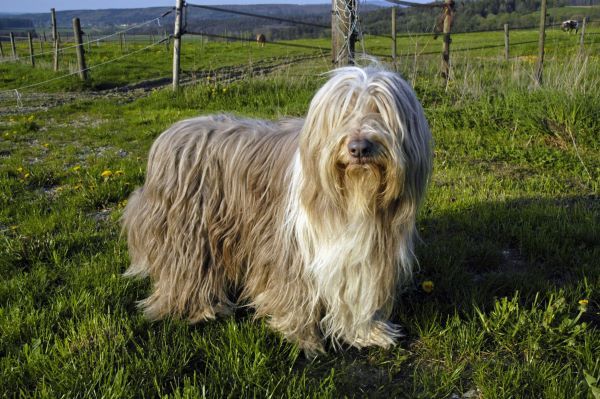
Bearded Collie care and grooming
The Bearded Collie has a long, dense double coat designed to protect it from harsh weather conditions. The outer layer is shaggy and slightly coarse, while the soft undercoat provides insulation. This breed sheds moderately year-round, with increased shedding during seasonal changes. Regular grooming is essential to prevent matting and keep the coat in good condition.
Daily brushing will remove loose hair and prevent tangles, especially around the ears, legs, and belly, while a weekly session with a pin rake, brush, comb, and possibly anti-tangle spray will remove dead hair and keep the coat in pristine condition. Bathing should be done as needed, along with routine nail trimming and dental care.
Health issues for Bearded Collies
- Hip Dysplasia is a common genetic condition that affects hip joint development, leading to joint instability and arthritis. Dogs with this condition may experience stiffness, pain, and difficulty moving. Rapid growth, excessive weight, and high-impact activities can worsen symptoms, making proper weight management and moderate exercise essential.
- Elbow Dysplasia is another inherited disorder that causes abnormal joint development in the front legs. This condition results in pain, swelling, and reduced mobility, often leading to lameness. Maintaining a healthy weight and avoiding excessive exercise in puppies can help reduce the risk of developing severe symptoms.
- Collie Eye Anomaly is an inherited congenital condition resulting from a mutation if the chromosomes that determine the development of the eyes (it always occurs in both eyes). It can result in other eye abnormalities such as a detached retina, optic nerve abnormalities and a loss of retinal cells.
This anomaly impairs vision and can result in other eye abnormalities such as a detached retina, optic nerve abnormalities and a loss of retinal cells.
An inherited congenital condition resulting from a mutation if the chromosomes that determine the development of the eyes (it always occurs in both eyes). - Progressive Retinal Atrophy (PRA) is a degenerative eye disease that causes gradual vision loss and can eventually lead to blindness. This condition is inherited and typically begins with symptoms such as night blindness and dilated pupils. Genetic testing is essential for identifying carriers and preventing the spread of the disorder through responsible breeding.
- Hypothyroidism is a hormonal condition that results from an underactive thyroid gland. It can cause symptoms such as weight gain, lethargy, and skin problems. Many cases are linked to autoimmune thyroiditis, where the immune system attacks the thyroid. Lifelong medication and regular veterinary monitoring help manage this condition effectively.
- Addison’s Disease is a disorder that affects the adrenal glands, leading to insufficient hormone production. Dogs with Addison’s Disease may show signs of weakness, vomiting, and low energy. Early diagnosis and consistent treatment are crucial in managing the condition and ensuring a good quality of life.
- Autoimmune Disorders are relatively common in Bearded Collies, with autoimmune thyroiditis being a particular concern. This condition can disrupt thyroid function and lead to weight gain, lethargy, and intolerance to cold. Environmental factors such as stress or infections can contribute to immune system imbalances, impacting overall health.
Not all conditions are covered by Pet Insurance. For details of Bow Wow Meow Pet Insurance cover, refer to the Product Disclosure Statement.
Free engraved pet ID tag on sign up3
Customer Satisfaction
21 day cooling off
Easy to use Pet Portal


